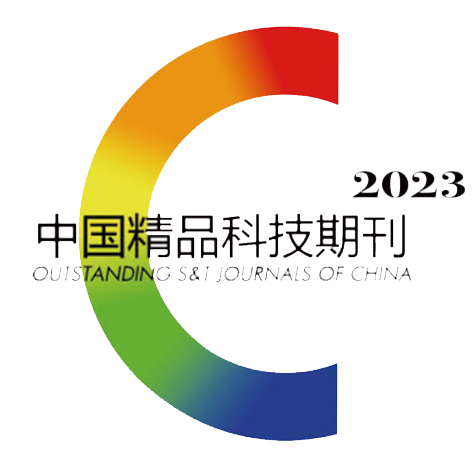| [1] |
夏姣. 四川泡菜发酵过程中乳酸菌的动态变化及其对泡菜风味的影响[D]. 雅安:四川农业大学2014.
|
| [2] |
全国调味品标准化技术委员会.泡菜:SB/T 10756-2012[S]北京:中国标准出版社,2012.
|
| [3] |
黄道梅. 不同盐度的工业化盐渍萝卜多菌协同发酵过程中菌相变化与风味品质变化研究[D].雅安:四川农业大学,2015.
|
| [4] |
Tao Xiong,Junbo Li,Fan Liang,et al. Effects of salt concentration on Chinese sauerkraut fermentation[J]. LWT-Food Science and Technology,2016,69:169-174.
|
| [5] |
Jung J Y,Lee S H,Kim J M,et al. Metagenomic analysis of kimchi,a traditional Korean fermented food[J]. Applied and Environmental Microbiology,2011,77(7):2264-2274.
|
| [6] |
燕平梅,魏爱丽,李润花,等.PCR-DGGE法分析酸菜中乳酸菌的多样性[J].中国酿造,2019,38(4):32-35.
|
| [7] |
Wouters D,Bernaert N,Conjaerts W,et al. Species diversity,community dynamics,and metabolite kinetics of spontaneous leek fermentations[J]. Food Microbiology,2013,33(2):185-196.
|
| [8] |
张锐,吴祖芳,沈锡权,等.榨菜低盐腌制过程的微生物群落结构与动态分析[J].中国食品学报,2011,11(3):175-180.
|
| [9] |
黄道梅,孙娟,刘书亮,等.直投式复合菌剂泡菜循环发酵中辅料配方的优化及品质分析[J].食品工业科技,2015,36(8):191-195.
|
| [10] |
Jung J Y,Lee S H,Lee H J,et al. Effects of Leuconostoc mesenteroides starter cultures on microbial communities and metabolites during kimchi fermentation[J]. International Journal of Food Microbiology,2012,153(3):378-387
|
| [11] |
张庆峰,吴祖芳,张鑫,等.复合乳酸菌接种发酵对浙东腌冬瓜发酵品质的影响[J].核农学报,2017,31(3):500-507.
|
| [12] |
卫玲玲,应铁进,陈延,等.甘蓝泡菜发酵菌种的复配研究[J].中国食品学报,2012,12(8):93-97.
|
| [13] |
李晓颖,刘虹,张颜廷,等.5株植物乳杆菌生物学特性及安全性评价[J].食品工业科技,2017,38(20):115-119
,124
|
| [14] |
谭才邓,朱美娟,杜淑霞,等.抑菌试验中抑菌圈法的比较研究[J].食品工业,2016,37(11):122-125.
|
| [15] |
任大勇,荣凤君,宫圣洁,等.发酵食品乳酸菌分离鉴定及功能特性研究[J].食品研究与开发,2016,37(19):194-199.
|
| [16] |
东秀珠. 常见细菌系统鉴定手册[M].北京:科学出版社,1999.
|
| [17] |
布坎南. 伯杰细菌鉴定手册[M]. 北京:科学出版社,1984.
|
| [18] |
程新,董英,苏萍,等.捺菜中低温发酵乳酸菌的筛选及其在菊芋泡菜生产中的应用[J].中国食品学报,2018,18(4):148-155.
|
| [19] |
张其圣,陈功,申文熹,等.低盐泡菜乳酸菌群落演变及其优势菌群的探讨[J].中国食品学报,2018,18(9):109-119.
|
| [20] |
余文华,杜丹青,张颖,等.耐低温乳酸菌发酵泡菜的研究[J].食品与发酵科技,2012,48(6):17-19
,36.
|
| [21] |
李传娟. 传统酸菜中抗菌性乳酸菌的筛选及其细菌素研究[D].呼和浩特:内蒙古农业大学,2012.
|
| [22] |
邓风,张一涵,罗芳会,等.咸丰鲊广椒中乳酸菌的分离与鉴定及其泡菜发酵特性评价[J].食品研究与开发,2019,40(16):172-177.
|
| [23] |
张其圣,陈功,申文熹,等.低盐泡菜乳酸菌群落演变及其优势菌群的探讨[J].中国食品学报,2018,18(9):109-119.
|
| [24] |
贺银凤.传统发酵乳制品中乳酸菌和酵母菌的互作关系[J].中国乳品工业,2010,38(10):43-45.
|
| [25] |
陈大鹏,郑娅,周芸,等.自然发酵与人工接种发酵法发酵泡菜的品质比较[J].食品工业科技,2019,40(18):368-372.
|
| [26] |
李小艳. 低温乳酸菌的筛选鉴定及其发酵泡白菜的应用研究[D].雅安:四川农业大学,2014.
|
| [27] |
郝明玉. 直投式发酵泡菜与自然发酵泡菜的比较研究[D].南昌:南昌大学,2013.
|










 DownLoad:
DownLoad: